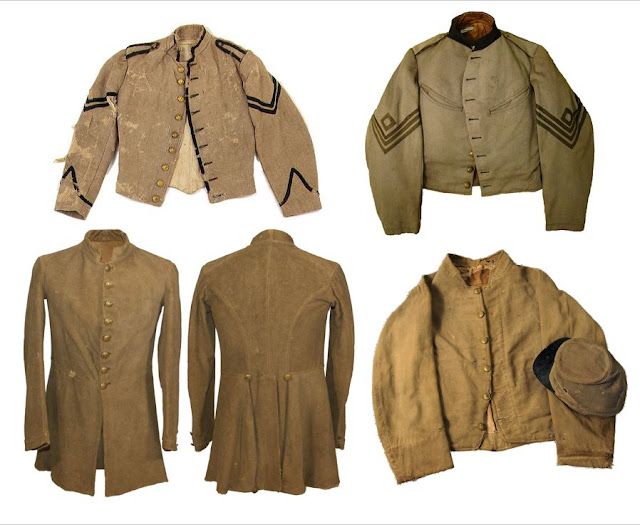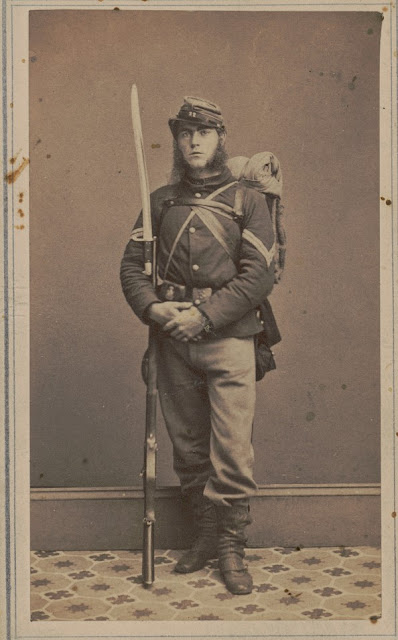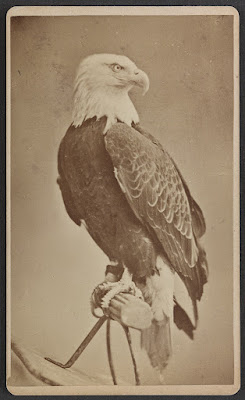Cursing Banks and Franklin: With the 77th Illinois at Sabine Crossroads
Corporal
Samuel Van Horne of the 77th Illinois spoke the sentiments of many
of his comrades in the ranks when he found the generalship of Generals
Nathaniel Banks and William B. Franklin lacking in the spring of 1864.
Thinking specifically of the Battle of Sabine Crossroads, Van Horne opined “I don’t suppose you will ever get a true account
of the affair as it was so miserably managed all through. Generals Banks and
Franklin will never have it published. It seems to me that any private in the
ranks would have done better. I tell you it was poorly managed and there is not
a soldier in this department but will (or do rather) curse Generals Banks and
Franklin.”
Such sentiments are understandable when Van Horne shares that of the 460 men of his regiment who went into action at Sabine Crossroads, only 160 came out and many of them (himself included) were wounded. His account of the battle first saw publication in the May 16, 1864, edition of the Zanesville Daily Courier.
U.S. General
Hospital, New Orleans, Louisiana
May 1, 1864
I once more have the opportunity of penning
you a few lines. You see by the heading that I am in the hospital but, thank
fortune, not on account of bad health. I suppose ere this you have heard all
the particulars of the battles of Mansfield and Pleasant Hill fought on the 8th
and 9th of April. The 77th Illinois with several other
regiments were pretty badly cut up. Our regiment went in with about 460 men and
came out with about 160. Co. B, of course, lost its share in killed and
prisoners.
Our brigade was in front and was
driven back some three or four miles before the enemy could be checked so that
nearly all of our wounded and a great many who were not fell into the enemy’s
hands. Our company numbered 28 and about 12 came off the field, 5 of them
wounded. I received two slight wounds early in the engagement; a Minie ball
passed through my hip just below the joint and not deep enough to strike the
bone so it is a slight wound. Another small ball went through my right leg
below the knee, passing through the thickest part of the calf. I think it too
is merely a flesh wound and both are doing well. Quite a number with whom you
are acquainted are wounded and with me here. George Chambers received a fatal
wound and died here in the hospital a few days ago. We know of 7 or 8 who were
taken and I hope without wounds. Four or five of our company came out without a
scratch; there are only 8 men left in Co. B commanded by the orderly.
 |
| General Nathaniel Prentiss Banks |
I don’t suppose you will ever get a
true account of the affair as it was so miserably managed all through. Generals
Banks and Franklin will never have it published. It seems to me that any
private in the ranks would have done better. Our brigade skirmished from 7 a.m.
to 4 p.m. when we met the main enemy 25,000 strong and our brigade only
numbered 5,000. The Second Brigade came up and was ordered to our right which
gave us no support at all. The Third Division of the 13th Corps was
some 3 or 4 miles in the rear when we first made the attack. They were brought
up on the double quick but were too late to give us any assistance. The enemy
was flanking us on both right and left, forcing us to fall back. Still they
came in solid column outnumbering us and driving the Third Division in
confusion.
About the time the fight commenced,
the 19th Corps was ordered into camp 6 or 7 miles back. When we were
driven back, the 19th Corps was ordered up while the Third and Four
Divisions were still falling back with the Rebels following close behind in
solid mass, both flanks moving up with the center. The 19th Corps
held the enemy in check until dark when the firing ceased. The whole army fell
back that night, the 13th Corps as far as Pleasant Hill where we
camped the night before and where General A.J. Smith with the 16th
Corps was preparing to meet the enemy. The Rebels followed close up,
skirmishing with the 19th Corps until they reached Pleasant Hill
where General Smith held them until the night of the 9th. Smith was
then ordered to fall back that night.
 |
| Battle of Sabine Crossroads |
It was afterwards found out that the
Rebs retreated at about the same time Smith did. Smith held his men in a horseshoe
shape and trapped the Rebs before they were aware of it and opened on them all
at once, just more than mowing them down. The Rebs made three desperate charges
but were forced back with about one half the number they came up with. General
Smith wanted to follow them up but Banks ordered him back. Smith told Banks he
was losing a glorious victory but no attention was paid to this and so he was.
I and many others know (or think at least) that General Smith could have
captured all or nearly all that we lost the day before, but no, he must fall
back.
One of the worst features of the whole
affair was having the train right up front. A long ammunition train was not
more than a mile and a half behind the advance and it blockaded the road so
that the artillery could not get back. The Chicago Mercantile Battery lost
every gun, nearly all their horses, and half of their men. I tell you it was
poorly managed and there is not a soldier in this department but will (or do
rather) curse Generals Banks and Franklin.
The wounded here are to be sent home in a few days on 60 days furlough. I should like to see you then.
To learn more about Sabine Crossroads, please check out these posts:
Worse Than Madness for Us: The 56th Ohio at Sabine Crossroads
Source:
Letter from
Corporal Samuel Van Horne, Co. B, 77th Illinois Volunteer Infantry, Zanesville
Daily Courier (Ohio), May 16, 1864, pg. 2











Comments
Post a Comment